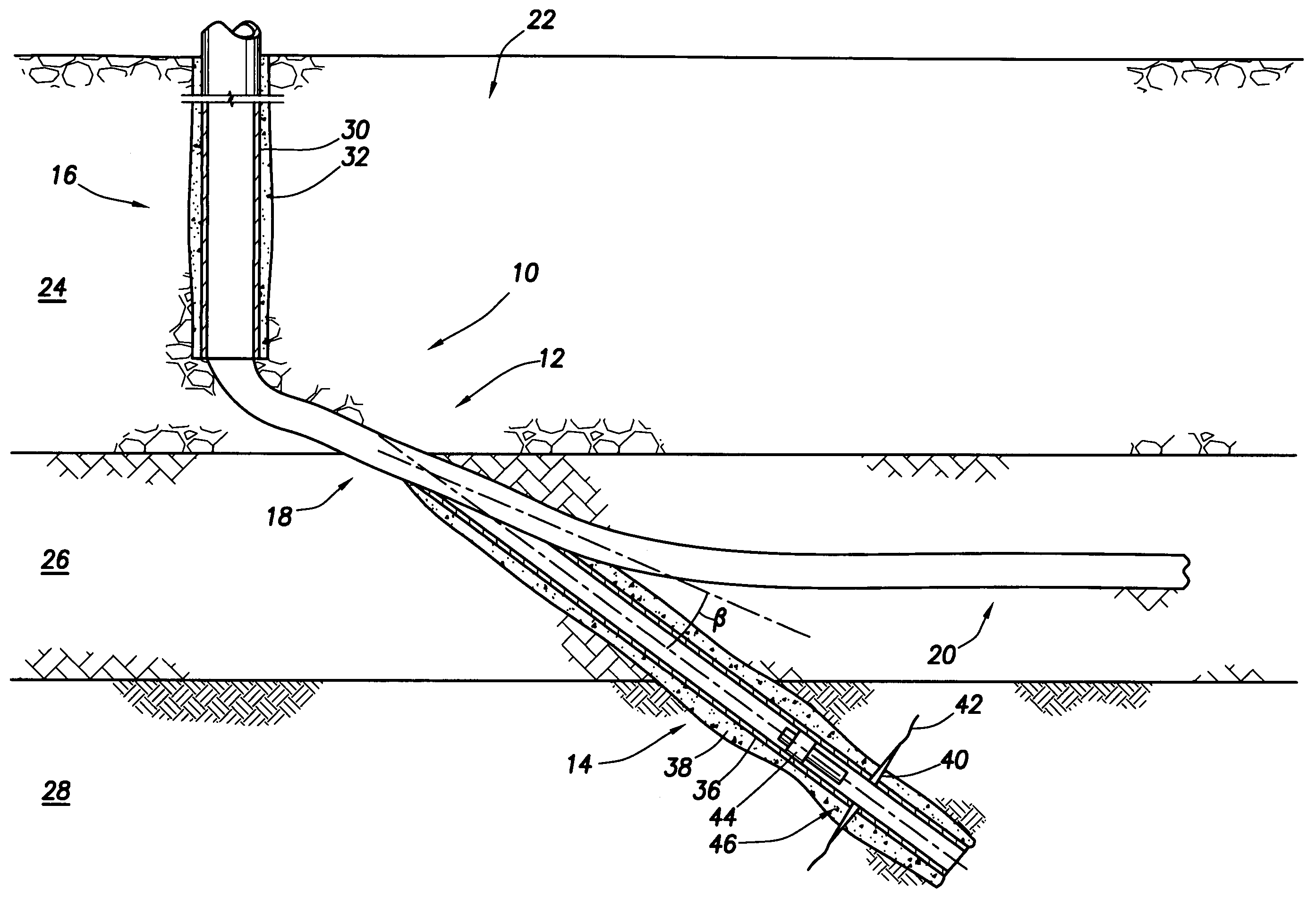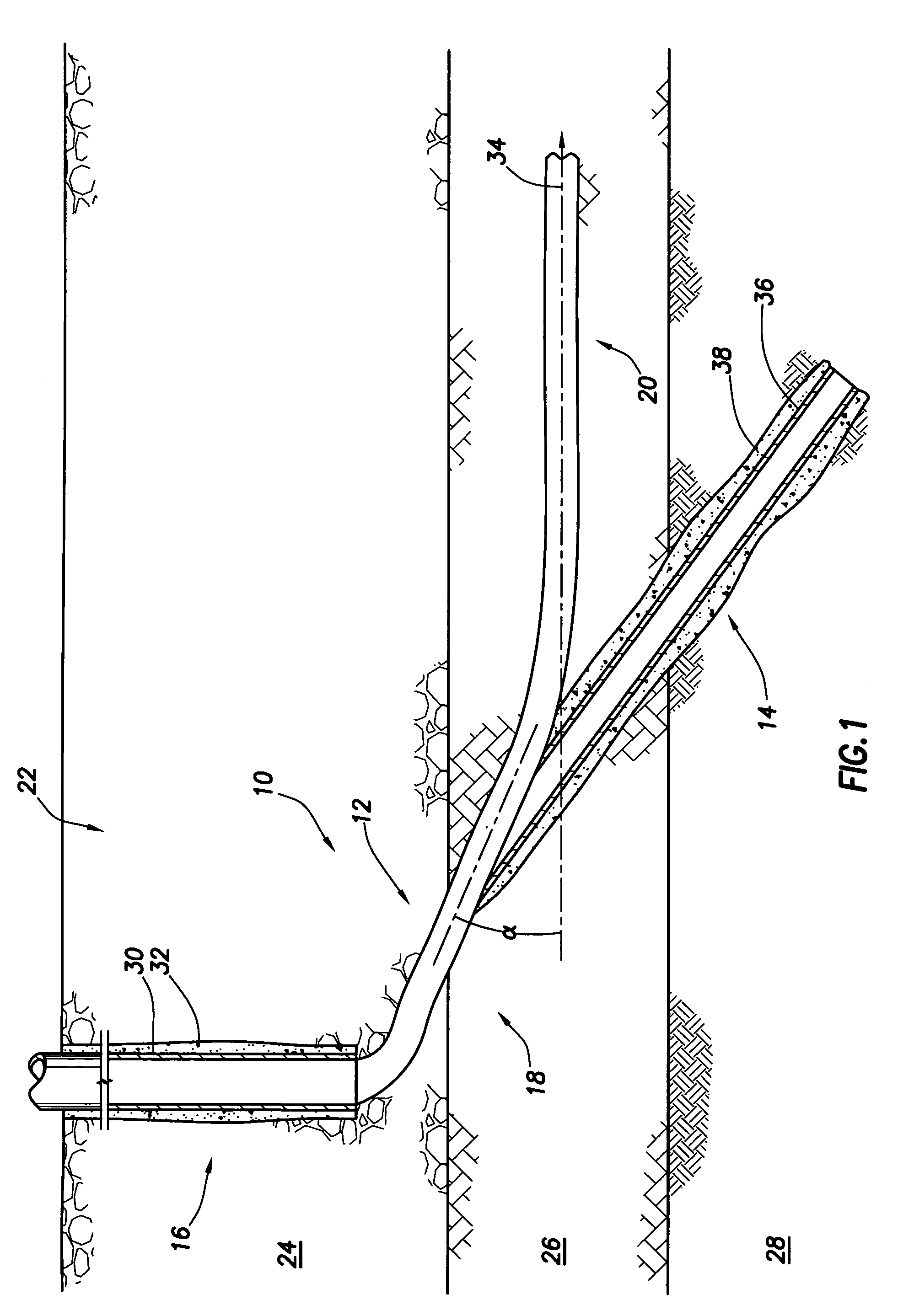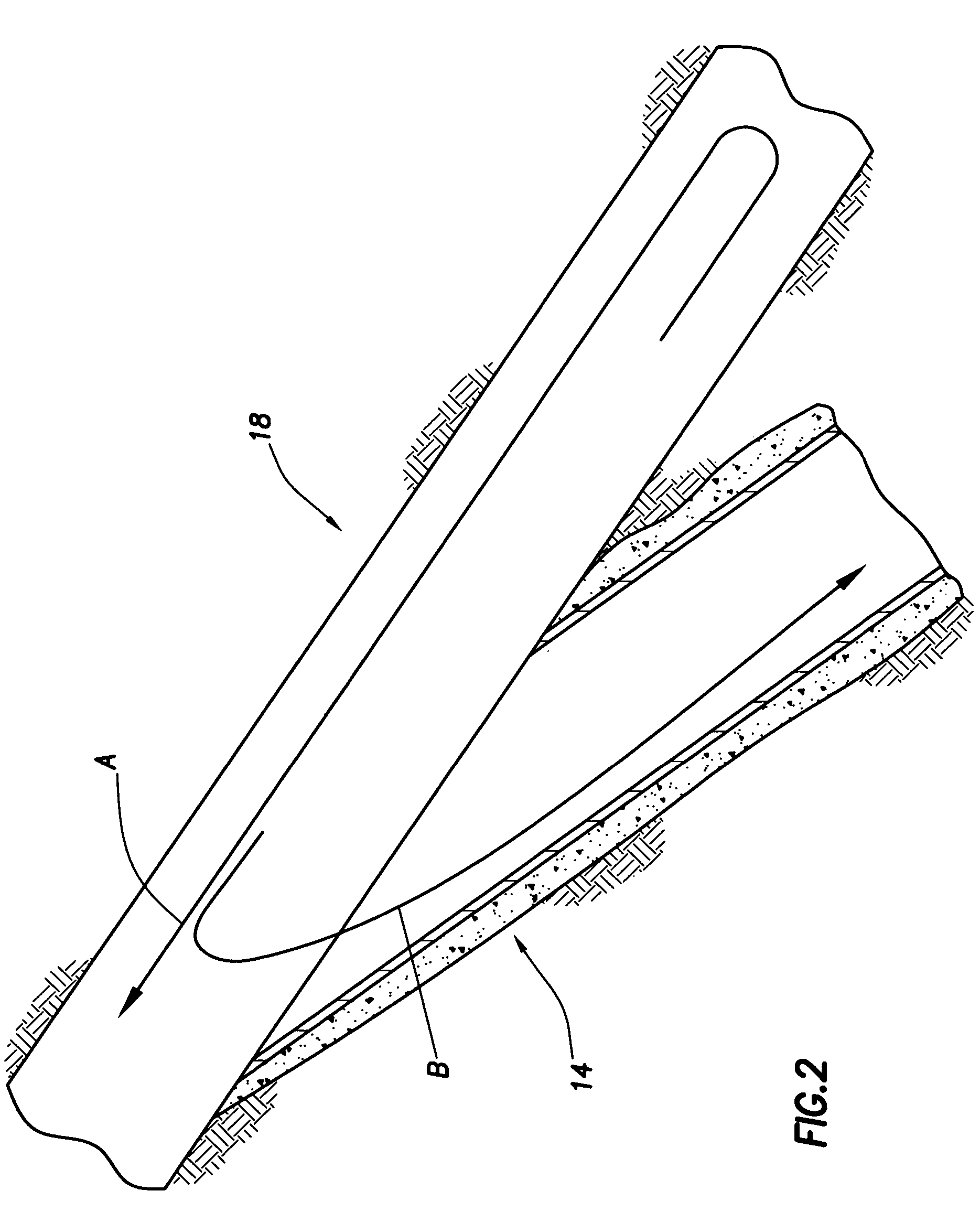Wellbore completion design to naturally separate water and solids from oil and gas
a technology of completion design and wellbore, which is applied in the direction of filtration separation, borehole/well accessories, separation process, etc., can solve the problems of affecting the recovery of water and solids, cumbersome and expensive techniques developed to deal with the removal of these elements, and not always environmentally friendly
- Summary
- Abstract
- Description
- Claims
- Application Information
AI Technical Summary
Benefits of technology
Problems solved by technology
Method used
Image
Examples
Embodiment Construction
[0018]The present invention is directed to a wellbore completion design that separates water and solids from oil and gas downhole in such a way that the water and solids remain downhole.
[0019]The details of the wellbore completion design in accordance with the present invention will now be described with reference to the accompanying drawings. Turning to FIG. 1, one embodiment of a wellbore configuration is shown generally by reference numeral 10. The wellbore 10 comprises a primary bore 12 and a secondary bore 14. The primary bore 12 in turn comprises a vertical section 16, deviated section 18 and a horizontal section 20. The secondary bore 14 is deviated from the deviated section 18 or the horizontal section 20 and intersects the deviated section 18 or the horizontal section 20 at an acute angle.
[0020]The wellbore 10 is formed in subterranean formation 22 by conventional drilling or equivalent techniques. Subterranean formation 22 in turn comprises an inactive or dead zone 24, a p...
PUM
| Property | Measurement | Unit |
|---|---|---|
| Angle | aaaaa | aaaaa |
| Angle | aaaaa | aaaaa |
| Angle | aaaaa | aaaaa |
Abstract
Description
Claims
Application Information
 Login to view more
Login to view more - R&D Engineer
- R&D Manager
- IP Professional
- Industry Leading Data Capabilities
- Powerful AI technology
- Patent DNA Extraction
Browse by: Latest US Patents, China's latest patents, Technical Efficacy Thesaurus, Application Domain, Technology Topic.
© 2024 PatSnap. All rights reserved.Legal|Privacy policy|Modern Slavery Act Transparency Statement|Sitemap



